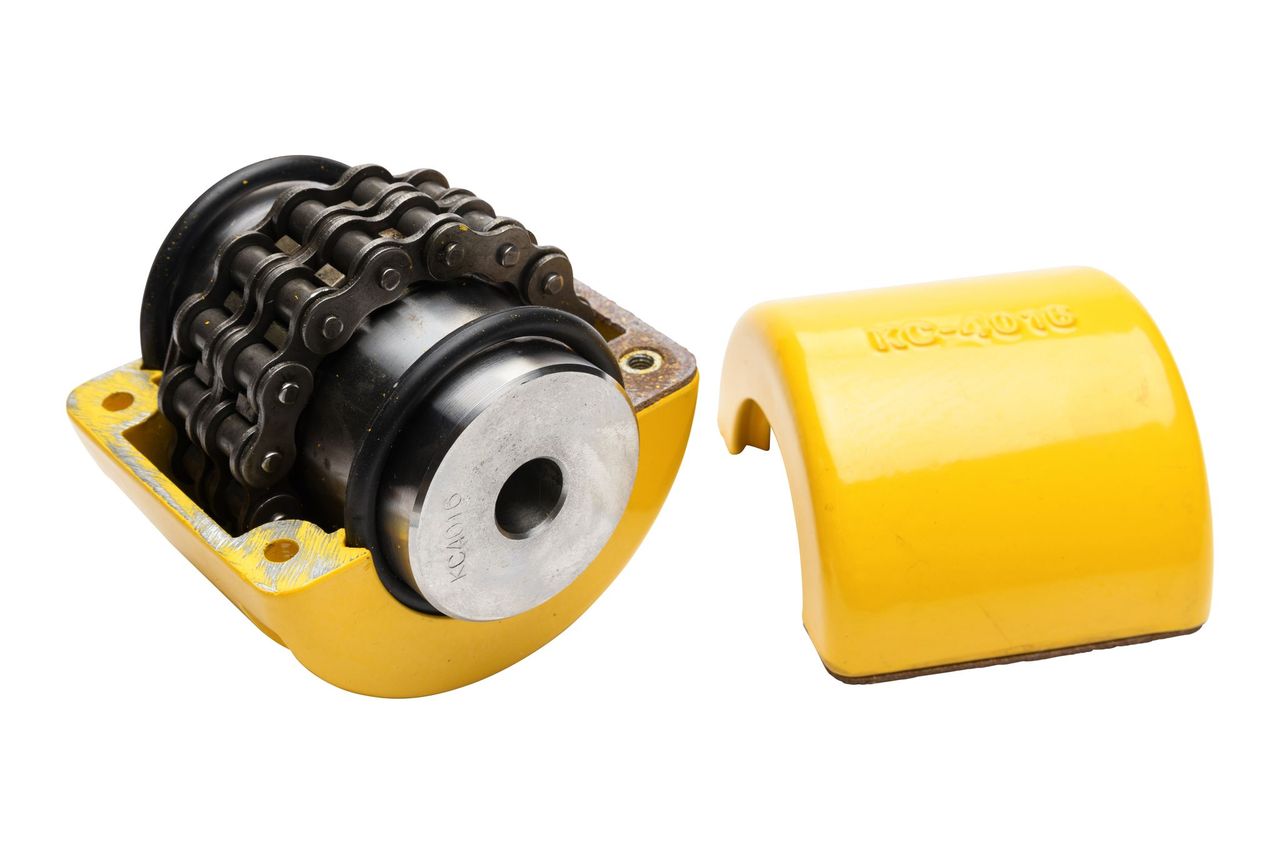Everything You Need to Know About Chain Couplings: Installation, Maintenance, and Performance Tips for Industrial Applications

Chain couplings are a time-tested solution for transmitting torque between two shafts in industrial machinery. Known for their durability, simplicity, and cost-effectiveness, they’re especially popular in agricultural, manufacturing, and material handling applications. In this guide, we’ll explore what chain couplings are, how they work, their benefits, and how to install and maintain them for optimal performance.
What Is a Chain Coupling?
A chain coupling consists of two sprocketed hubs connected by a strand of roller chain—either single or double strand. The sprockets are mounted on the shaft ends, and the chain wraps around them to transmit torque. This design allows for a small degree of shaft misalignment, making it ideal for rugged, low-speed applications.
Key Components:
- Sprocket Hubs: These are mounted on the shaft ends and feature sprocket teeth that engage with the roller chain.
- Roller Chain: Connects the two hubs and transmits torque between shafts.
- O Rings: Positioned over each sprocket hub, these seals help retain lubricant and prevent contamination from dust, moisture, and debris.
- Coupling Cover: A protective casing that encloses the chain and sprockets, retaining grease and shielding the coupling from environmental damage. Fastened together by 4 bolts
- Locking Pin & Clip: Used to secure the chain in place once wrapped around the sprockets.
Where Are Chain Couplings Used?
Chain couplings are commonly found in:
- Agricultural machinery
- Conveyors
- Pumps
- Mixers
- Compressors
- Material handling systems
They’re ideal for unsophisticated or low-speed applications where flexibility and ease of maintenance are valued.
Benefits of Chain Couplings
- High Torque Capacity: Compact design with excellent torque transmission.
- Misalignment Tolerance: Accommodates angular and parallel misalignment.
- Easy Installation: Simple to assemble and disassemble.
- Cost-Effective: Lower initial cost compared to other coupling types.
Step-by-Step Installation
- Fit the O-Ring Oil Seals and Mount the Sprockets: Slide the oil seals over each sprocket hub before mounting. Position the sprockets on each shaft with the teeth facing inward toward each other.

- Check for Misalignment: Slide the sprockets together and inspect for:

- Angular misalignment (a): Must not exceed 1°
-
Offset misalignment (E): Must not exceed 2% of the chain pitch
Use a straight edge and feeler gauges to check alignment at the tooth roots.

- Verify Assembly Width: Measure the distance C between sprocket faces and confirm it matches the specified width for your coupling size.

- Test Chain Fit and Adjust if Necessary: Wrap the chain around both sprockets. It should fit easily and squarely. If the chain doesn’t wrap smoothly, adjust sprocket or shaft positions and retest.

-
Secure the Sprockets
Once aligned, remove the chain and lock both sprockets to their shafts.
- Prepare, Lubricate and Install the Chain Remove the locking clip and pin from the chain. Apply grease to the chain, wrap it around the sprockets, and secure it with the locking pin and clip.
-
Grease the Coupling Interior
Fill the space between the chain and the cover with soft to medium grease.
-
Fit the Coupling Cover
Ensure O-ring seals are seated correctly in the casing grooves. Tighten the cover bolts alternately to ensure even pressure.
Maintenance Guidelines
Routine maintenance ensures long-term reliability:
- Lubrication: Re-lubricate every 6 months or more frequently in harsh conditions.
- Inspection: Check for wear on sprocket teeth and chain links.
- Cover Care: Ensure seals are intact to prevent lubricant loss.
- Flushing: Clean out old grease and contaminants during relubrication.
Excessive misalignment can lead to rapid wear, seal failure, and loss of lubrication.
Summary
Chain couplings are a reliable, rugged, and economical choice for many industrial applications. With proper installation and regular maintenance, they can deliver years of dependable service. Whether you're outfitting a new system or replacing worn components, RR Fisher offers a range of chain couplings to suit your needs.

